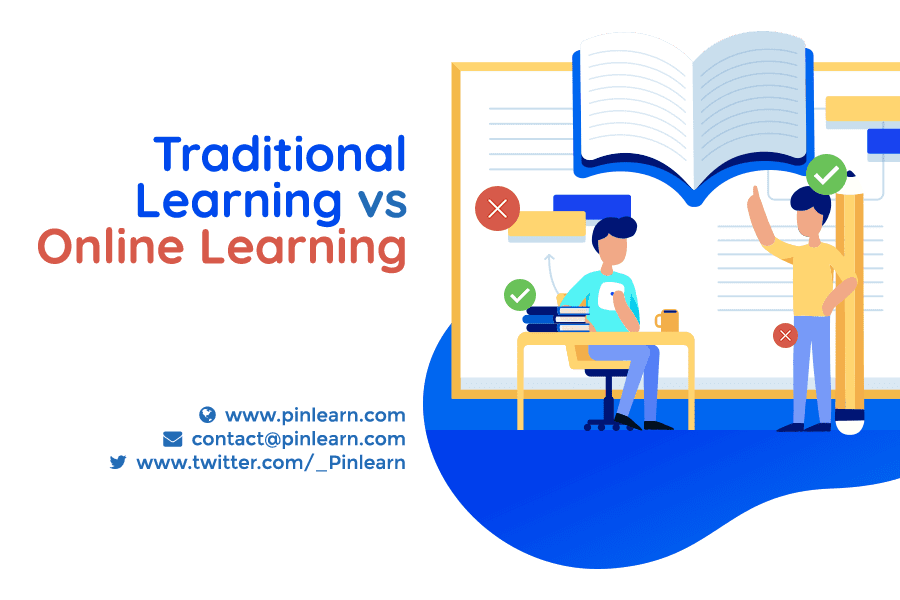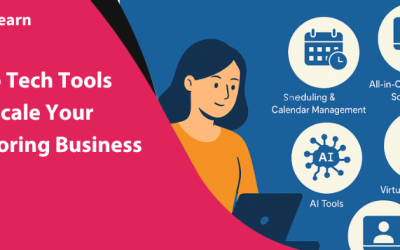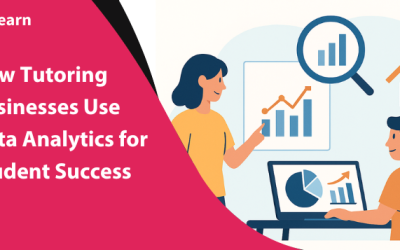Traditional Learning vs Online Learning: Which one is better?
Education has become one of the fastest growing business in recent years and also online education has also become more popular in the fast-paced growing society.
Online courses allow students to take courses from different countries. Some schools, universities also offer eLearning courses or blended courses in the both in-class and online medium. These traditional brick and mortar institutions also offering more online courses to cope up with the advanced learning process. The emerging of online education is persuading just because of the expansion of technology and desire of people to learn at their own pace.
Although the transition of classroom learning to online learning has created a surefire for both learners and teachers, still there are certain unique attributes which create a thin line between the two options of learning. Despite the enormous popularity of online education, most of the people stay away from such methods. The individuals find the type of method appropriate depending upon their requirements and preferences.
The following guide of differences with their pros and cons between traditional learning vs online learning will definitely help the professionals to make a clear and better understanding.
Let’s do compare the two important options.
What is Traditional Learning?
The advantages of regular education procedure include the regular attendance in classes, the interaction between students and teacher at their own class, maintain discipline by following a schedule on campus, enhance the student’s fitness as well as mental alertness.
The method helps the teachers to know their students personally by which they can able to evaluate the strengths and weaknesses of students and can guide for better possibilities. The continuous interaction between the teachers and students help to build a better relationship between them.
The students also share their views directly with the teacher and clarify the queries at the right moment. Books, notes, materials, question and answer pattern are the generalized way of learning which help the students in a better way. The students can easily find the laboratories, workshops, clinics, etc. in the campus to attain practical knowledge of a subject.
The method is best suited for the younger students who are attending the college, who needs more guidance and direct contact with teachers or professors. The traditional learning can be a more comfortable fit for the students who value the campus experience more desirable than online learning.
What is online learning?
Online education involves taking courses on the internet. The flexibility and convenience provide an opportunity for students by allowing them to read at their own pace without following a strict schedule.
The online learning is best suited for regular students. However, the course can be completed at anywhere just with the help of a device with internet connectivity. This form of learning makes ideal and cost-effective for students who can’t attend the regular classes. The students can follow online learning materials, online video lectures, animated videos, online games, graphics and many more to ensure online education. Live interaction is the best way to learn in online learning as this provides a two-way interaction through video conferencing.
Professionals can boost their skills and career opportunities with the help of online education. Online degrees are very helpful for professionals to get promotion in an organization. The learners need not attend the regular classes after the hectic and exhausting schedule of your job life. They can save their valuable time, money and energy easily. The online courses often offer online forums, emails, webinars, chat interaction with instructors for solving the queries. There are certain online search engines such as Google, Bing, etc. that provide the information resources for free which helps in an appropriate manner.
Advantages of eLearning vs traditional learning:
The learners always want a relevant, self-paced, and personalized mode of learning. They want to learn at their own comfort and requirements. Have an analytical look at the eLearning vs traditional learning.
At one point, it is merely of question the quality of education provided by either of the learning methods. The following aspects of online learning vs classroom learning will give you a clear picture. Let’s dive in different aspects.
Flexibility:
You can learn online courses even if you are at your home or workplace. The flexible timetable in eLearning platforms makes a great way to improve its academically. You can focus on your other skills apart from your jobs. You can manage the time to learn more analytical or critical skills in a particular domain. For example, a person can learn the advanced level of JavaScript to be used in programming while doing a job.
Flexible learning allows learners to complete their assigned projects at their own pace. A person can able to participate from anywhere with a good internet connection. You can travel frequently for your personal and professional reasons. A learner can eliminate the need for commuting or relocating from one place to another.
Learning time:
You will be able to learn more skills online to cope up with the market through online learning. The online learning provides a convenient way to obtain homework, exams, test scores, and many more within a pace of time. It allows the learning in a distant or disadvantaged location. The e-learning courses take less class time than a traditional course.
Social interaction:
The participation of students and instructors in online learning is provided in a more substantive way. The discussion occurs through online chat for solving queries, forums, discussion boards, email, etc. The learners can clear their doubts in the online environment.
Cost effective:
The fees for online education are 2 to 3 times lower than the tuition fees at a traditional educational institute. The material fees are minimal for online programs.
Instructional materials:
An online learner can get the course materials by an instructor in the form of visual aid like PowerPoint Presentation, text format, PDF format, or through video and audio lectures.
Simulations, interactions, and storytelling are used for online courses. The graphics which include icons, symbols, photos, and illustrations are also helpful for better online learning. The animated videos are powerful tools to attract more modern learners.
Assessment:
Assessment of learning is an essential component in the online environment. The assessment includes written Assignments like short essays, research papers, case study responses, etc. A learner can get feedback and build community through the assessment.
A learner can get the traditional multiple choice questions, short or long answer questions delivered through online multiple choice question answer sessions. You can also get the understanding of course material with the face to face proctor tests.
Disadvantages of online learning:
While there are many reasons to start an online education, there are certain cons to this method of learning. You can get little chance to join the extracurricular activities organized by educational institutions.
You won’t be able to socialize on student reunions and recreational centers. Online education is not applicable to medical institutions. Online learning provides you the limited options for a career, and won’t give experiences of college life.
Pros of traditional learning:
Experience of different campus activities:
Traditional learning provides several types of experiences like clubs, sports activities, communal activities, live seminars, live presentation, and eating in canteens, etc.
Develop a vast network:
The physical presence provides interaction between teachers, students. Moreover, you can meet a number of people like old students. You can establish a large network which helps in gaining the personality and knowledge.
Recognition from degree:
You will get the recognition from a college, board, or university for the validity of your education. The certificate will provide you credibility for the time spent to get it. You will get a certificate even if you cleared the subject with a marginal grade.
Get facilities for different activities:
You will get the related equipment and other facilities required for your courses in classroom learning.
The traditional classroom training provides an approach of interaction among the students and teachers by raising the hands, asking questions, discussing a certain topic, giving a presentation, etc.
Degree for certain career opportunities:
If you want to obtain certain higher degrees like Masters and Ph. D, you can only get the degrees after having a bachelor’s degree certificate from a traditional learning center like universities. It is a great way to flourish being exposed to colleagues, mentors, and professors.
Cons of Traditional Learning:
Expensive:
Education at traditional learning centers is usually less cost-effective as the institutions need many expenses for the resources which increase the cost of courses.
Cost of commuting:
The cost of commuting to schools and the accommodations within the school include in the traditional learning system. The traveling cost will be more while doing to and fro from the class.
No flexibility:
The rigid schedules in colleges and universities make the students more difficult to the study. The students have to organize their regular classes based on the timetable and need to follow the attendance. The students are mandated to attend the school and they don’t have the chance to express their skills.
To conclude:
At first, consider your desired education, figure out which type of education is affordable, and then select the course. After going through the differences between online and traditional education, you can easily decide the better option suitable for your career.





